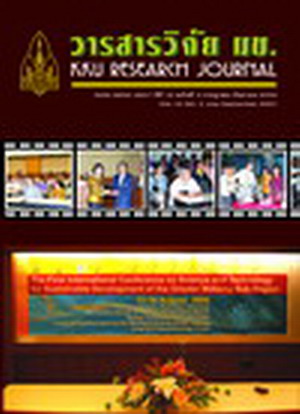Use of Aquatic Iinsect as a Bioindicator of Water Quality of Mae Kham Watershed, Chiang Rai Province.
Main Article Content
Abstract
This study measured the aquatic insect diversity and its application as a bioindicator to monitor water quality in Mae Kham Watershed, Chiang Rai Province. Shannon-Wiener index, BMWPThai score with ASPT, EPT ratio and HBI were used to assess water quality. Physical, chemical and biological parameters were also measured to compare with the surface water quality standard of Thailand. 241 aquatic insect morphotaxa from 86 families in 10 orders were identified. The most abundant family found during the year was Baetidae in the Ephemeroptera order. Using aquatic insects as bioindicators, it can be concluded that all sampling sites were shown to have good to polluted water quality, depending on land use and human activities. From the PCA, biological indices were related to some physico-chemical properties of water quality. ASPT, EPT ratio and diversity index were related to some parameters such as velocity, DO, alkalinity and conductivity. From the results, ASPT (based on BMWPThai) is suitable for use in the Mae Kham Watershed while the ShannonWiener index is appropriate for use in watershed areas for quantitative study. The EPT ratio is suitable for use along upstream areas while the HBI index is not appropriate for use in small streams.


